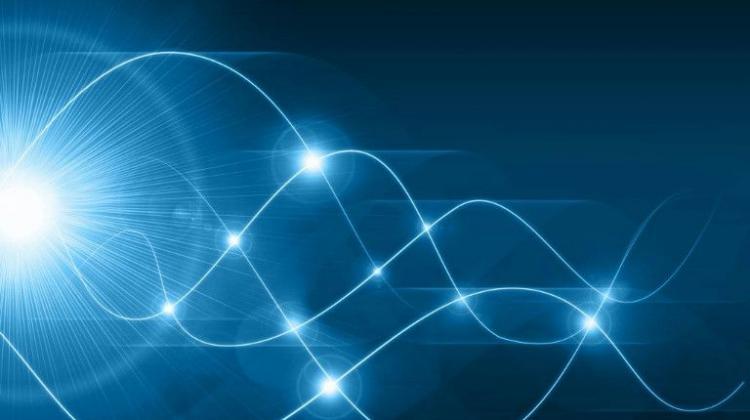Institute of Physics PAS: Long Josephson junction can be obtained in quantum fluids of light
 Photo: Fotolia
Photo: Fotolia
Polish-Italian research group has shown that in a quantum fluid of light it is possible to obtain a long Josephson junction (LJJ): a special, dynamic state of the quantum fluid. These studies are also an important step towards the application of fluids of light in practice.
The Institute of Physics of the Polish Academy of Sciences informed about the research in a press release sent to PAP.
Superconductivity, superfluity and the associated Bose-Einstein condensation are rare demonstrations of quantum physics that can be observed on a scale larger than the size of individual molecules. One of their consequences is the Josephson effect, which occurs at the border of two superconductors coupled by a thin insulating barrier.
This effect has practical applications: it is used, for example, in sensitive magnetometers (SQUID - superconducting quantum interference device), which are an integral component of medical scanners using ultrasensitive magnetic resonance imaging (MRI). But the use of the Josephson effect to image tissues has limitations resulting from the need to cool down the measurement system to cryogenic temperatures. This significantly increases the cost and the degree of complexity of such devices.
This inspired the research group, which included scientists from the Institute of Physics PAS, to look for systems in which superfluidity and similar quantum effects could be realized at room temperature.
In the last decade, the development of nanomaterial research has spawned the concept of a new physical state, called the "fluid of light". It is a result of interaction of matter and light, usually obtained in optoelectronic semiconductor structures, in which not only electrons but also light (photons) is located inside the structure, which leads to their mutual coupling and a loss of unambiguous identity of light and matter. Such a fluid of light has properties analogous to superfluid and superconducting states.
Fluids of light are obtained in particular in the case of quasi particles (elementary excitations in a crystal) called exciton-polaritons. They form in semiconductors with a specially designed structure, as a result of interaction of light with excitons - pairs of particles composed of an electron and an electron hole. Such polaritons are quantum quasi particles that behave like the famous "Schrödinger`s cat". Their quantum state contains two alternatives: a "living cat" - when the exciton exists, or a "dead cat" when instead of an exciton there is only a photon in the system.
Thanks to their specific properties, it is possible to observe Bose-Einstein condensation and superfluity in a quantum fluid of light even at room temperature.
In an article published in the Nature Photonics (https://www.nature.com/articles/s41566-019-0425-3), researchers from the Institute of Physics PAS in collaboration with an experimental group from CNR Nanotec in Lecce, Italy showed that in a quantum fluid of light it is also possible to obtain a special, dynamic state of the quantum liquid called the long Josephson junction.
This junction is characterized by a dimension that exceeds the characteristic length scale, corresponding to interatomic interactions in the quantum system. Thanks to this, it was possible to demonstrate the phenomenon of Josephson vortices, which, unlike classical vortices, are characterized by a quantized momentum. Their "vorticity" is always a multiple of a constant value. Therefore, due to the possibility of encoding information by means of quantized vorticity, liquid vortices have become promising candidates for applications in quantum computers.
The presented research is also an important step on the way to the application of fluids of light in practice, for example in SQUID interferometers. Thanks to the use of semiconductor technology - and in particular the possibility to observe phenomena at room temperature - the new technology should contribute to a significant equipment costs reduction, as well as the development of new applications, where the sensitivity of measurement is crucial.
PAP - Science in Poland
kflo/ ekr/ kap/
tr. RL
Przed dodaniem komentarza prosimy o zapoznanie z Regulaminem forum serwisu Nauka w Polsce.















